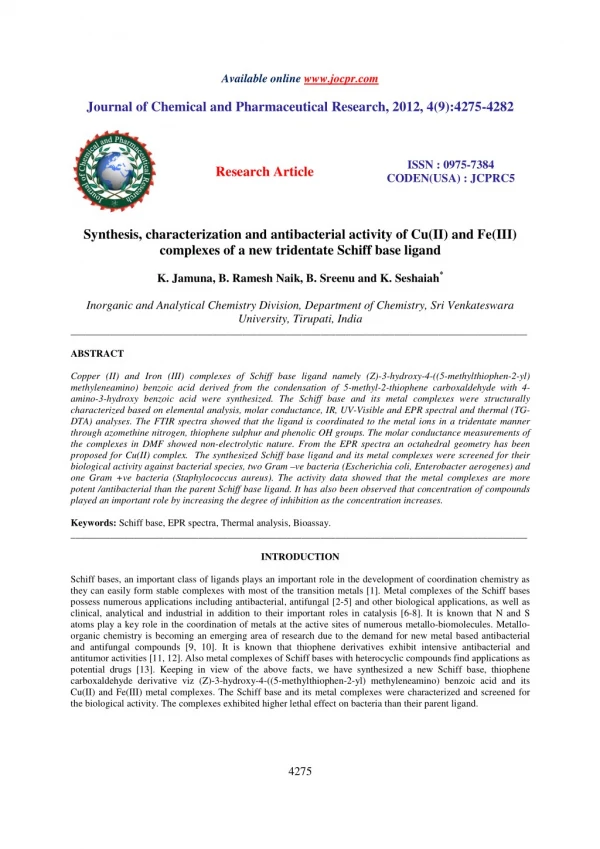Synthesis, characterization and antibacterial activity of Cu(II) and Fe(III) complexes of a new tridentate Schiff base l
Copper (II) and Iron (III) complexes of Schiff base ligand namely (Z)-3-hydroxy-4-((5-methylthiophen-2-yl) methyleneamino) benzoic acid derived from the condensation of 5-methyl-2-thiophene carboxaldehyde with 4- amino-3-hydroxy benzoic acid were synthesized. The Schiff base and its metal complexes were structurally characterized based on elemental analysis, molar conductance, IR, UV-Visible and EPR spectral and thermal (TGDTA) analyses. The FTIR spectra showed that the ligand is coordinated to the metal ions in a tridentate manner through azomethine nitrogen, thiophene sulphur and phenolic OH groups. The molar conductance measurements of the complexes in DMF showed non-electrolytic nature. From the EPR spectra an octahedral geometry has been proposed for Cu(II) complex. The synthesized Schiff base ligand and its metal complexes were screened for their biological activity against bacterial species, two Gram –ve bacteria (Escherichia coli, Enterobacter aerogenes) and one Gram ve bacteria (Staphylococcus aureus). The activity data showed that the metal complexes are more potent /antibacterial than the parent Schiff base ligand. It has also been observed that concentration of compounds played an important role by increasing the degree of inhibition as the concentration increases.
★
★
★
★
★
117 views • 8 slides

